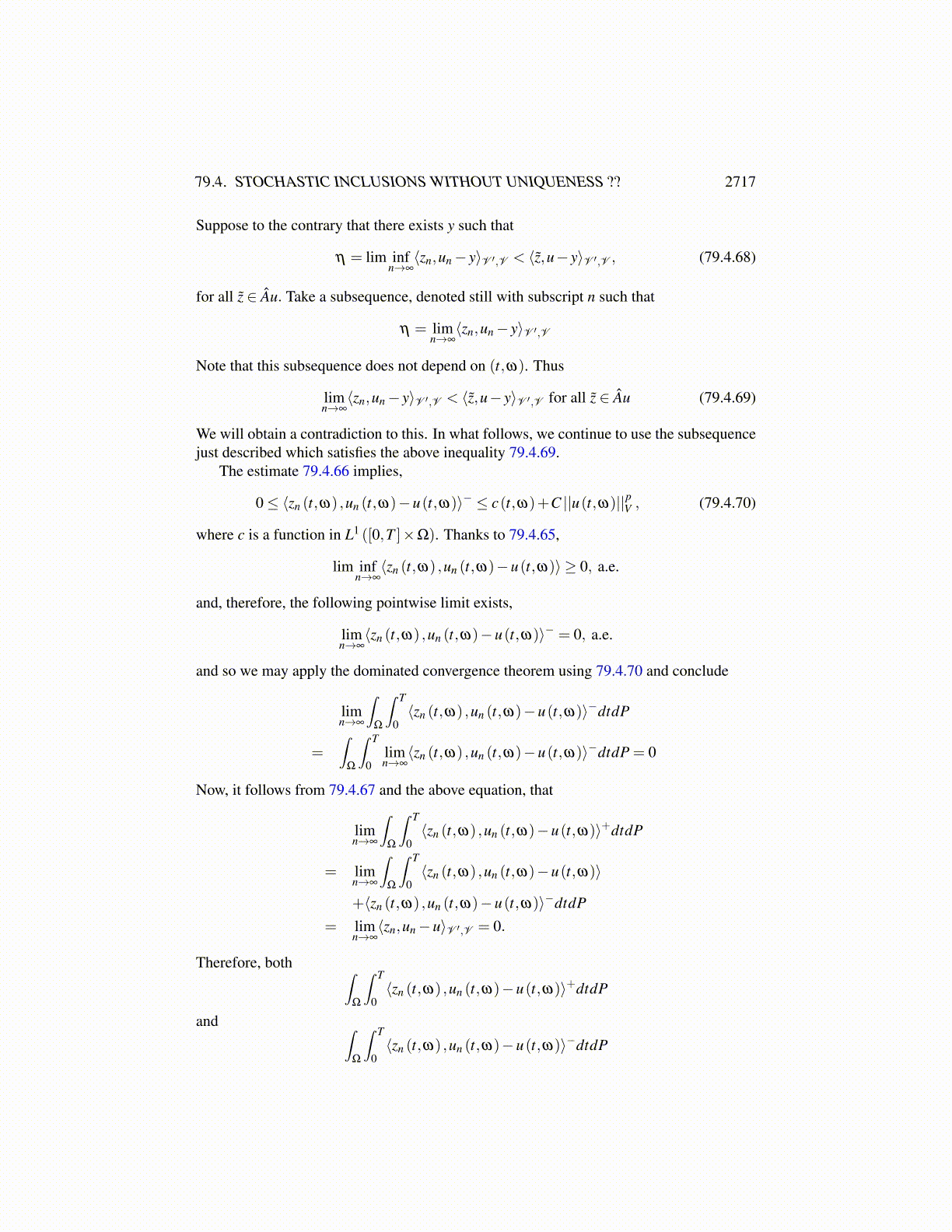
79.4. STOCHASTIC INCLUSIONS WITHOUT UNIQUENESS ?? 2717
it follows from 79.4.57 that∣∣∣∣unk (t,ω)
∣∣∣∣V and consequently
∣∣∣∣znk (t,ω)∣∣∣∣
V ′ are bounded.Thus, denoting this subsequence with n, there is a further subsequence for which un (t,ω)→ψ (t,ω) weakly in V which was what was claimed.
But also, it follows from Lemma 79.4.6 that for ω /∈ N,∥∥∥∥un (t,ω)−u0 (ω)+∫ t
0(zn (s,ω)− f (s,ω))ds−
∫ t
0ΦdW
∥∥∥∥U ′→ 0
where n doesn’t depend on (t,ω).By convexity, Lemma 79.4.6, and weak semicontinuity considerations, it must be the
case that ∥∥∥∥ψ (t,ω)−u0 (ω)+∫ t
0(z(s,ω)− f (s,ω))ds−
∫ t
0ΦdW
∥∥∥∥U ′
≤ lim infn→∞
∥∥∥∥ un (t,ω)−u0 (ω)+∫ t
0 (zn (s,ω)− f (s,ω))ds−∫ t
0 ΦdW
∥∥∥∥U ′
= 0
Here n = n(t,ω) is a subsequence. But of course, this requires ψ (t,ω) = u(t,ω) in U ′
thanks to 79.4.60 and so in fact, un (t,ω)→ u(t,ω) weakly.Now, 79.4.62 and the limit conditions for pseudomonotone operators imply that the
liminf condition holds. There exists z∞ ∈ A(u(t,ω) , t,ω) such that
lim infn→∞⟨zn (t,ω) ,un (t,ω)−u(t,ω)⟩
≥ ⟨z∞,u(t,ω)−u(t,ω)⟩= 0> lim
k→∞⟨znk (t,ω) ,unk (t,ω)−u(t,ω)⟩
= lim infn→∞⟨zn (t,ω) ,un (t,ω)−u(t,ω)⟩
which is a contradiction. This completes the proof of the claim.It follows from this claim that for given ω off a set of measure zero and t /∈Mω ,
lim infn→∞⟨zn (t,ω) ,un (t,ω)−u(t,ω)⟩ ≥ 0. (79.4.65)
Also, it is assumed thatlim sup
n→∞
⟨zn,un−u⟩V ′,V ≤ 0.
This continues holding for subsequences. From the estimates,∫Ω
∫ T
0
(b3 ||un (t,ω)||pV −b4 (t,ω)−λ |un (t,ω)|2H
)dtdP
≤∫
Ω
∫ T
0∥u(t,ω)∥V
(∥un (t,ω)∥p−1
V b1 +b2
)dtdP
so it is routine to get ∥un∥V is bounded. This follows from the assumptions, in particular79.4.57.